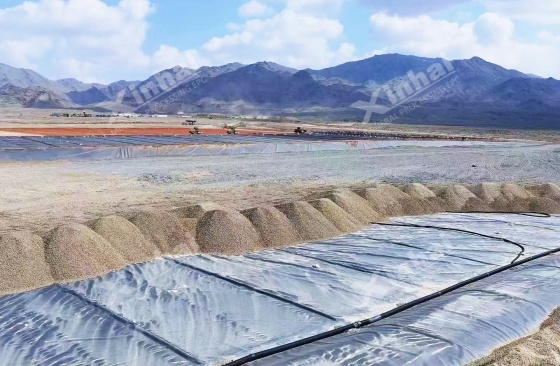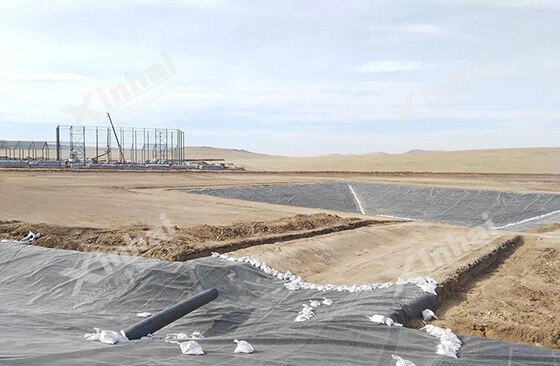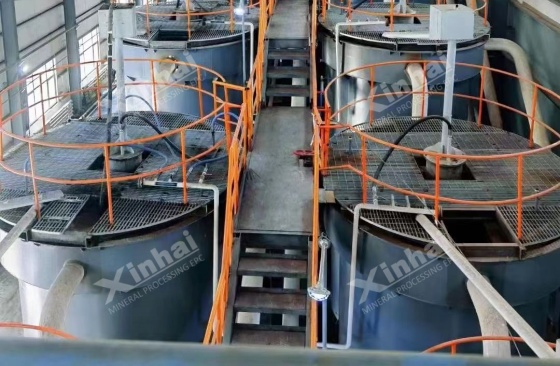If you want to know more information (such as product/process price, etc.), please contact us 24-hour telephone
Heap leaching of gold is a go-to method for pulling gold from low-grade ores. You stack crushed ore, pour on a special solution to dissolve the gold, and then collect it for processing. It’s a cheap, scalable trick, especially in dry places like Nevada or Western Australia, where water’s tight.
This process shines in gold ore plants because it handles big volumes and keeps costs low. A mine in Ghana, for example, processes 10,000 tons a day using heap leaching and spends 30% less than milling setups.

First up, you prep the ore. Gold ore from the mine gets crushed to a size that fits the ore’s quirks and the gold’s tiny bits. Smaller chunks make the pile more open, so the solution can soak through better and grab more gold. A Nevada mine crushes to 10 mm for oxide ores and hits 85% recovery.
But don’t go too fine. Super tiny particles clog the heap and slow everything down. A site in Chile learned this the hard way—crushing to 5 mm dropped their leaching speed by 20%. So, test your ore first to find that sweet spot for max gold pull.
Once crushed, the ore gets piled into heaps on special pads. Trucks and bulldozers stack it up in one go. The heap’s height, length, and openness depend on the ore type. A typical setup might be 6 meters high and 100 meters wide, like at a South African mine.
Next, you set up sprinklers on top. These pipes spread a cyanide-based solution across the heap. The liquid trickles down, pulling gold as it goes. This “pregnant” solution, loaded with gold, collects at the bottom. Boosting spray strength—say, 10 liters per square meter—can lift gold recovery by 5%, as seen in an Australian operation.

As the solution drips through, it flows into channels under the heap. These lead to settling tanks. A mine in Peru uses a lined ditch to catch this precious liquid without leaks.
After settling, the rich solution hits an adsorption tank. Activated carbon soaks up the gold. Then, desorption and electrolysis turn it into solid gold. A plant in Mali got 90% of their gold this way, yielding 2 tons a year from low-grade ore.
Several things can make or break your heap leaching of gold:
Ore Particle Size: Smaller bits let solution flow better but clog if too fine. A 12 mm crush worked great in Nevada, but 3 mm choked the heap.
Heap Height: Too tall—like over 8 meters—squashes the bottom, slowing flow. A Ghana site keeps heaps at 5 meters for steady results.
Cyanide Strength: Too weak, and gold stays put. Too strong, and you waste money or harm the environment. A 0.05% cyanide mix is often just right, per tests in Australia.
Leach Time: More time pulls more gold but drags out the cycle. A 60-day leach in Chile hit 88% recovery, but 30 days only got 70%.
Site Setup: Build on slopes or flat ground with anti-leak liners. Poor liners in a Mexican mine cost $500,000 in cleanup after a spill.

Heap leaching has some solid perks:
Cheap setup with minimal gear—think basic pads and pipes.
Scales up easy for big deposits, like a 50-million-ton site in Peru.
Uses less power than milling. A South African mine cut energy costs by 40%.
But it’s not perfect:
Takes longer—weeks or months versus days for tank leaching.
Doesn’t work great for rich ores that need faster methods.
Can harm the environment if you skip proper cleanup. Dumping heaps without washing leaves cyanide behind, like a messy spill in Brazil cost $1 million to fix.
It’s a trade-off, but for low-grade ores in remote spots, heap leaching’s tough to beat.
| Process | Best for / Target Ores | Recovery Speed | Typical Cost Profile | Key Strengths | Main Limitations | Typical Use Case / Example |
|---|---|---|---|---|---|---|
| Tank Leaching | Oxide ores, well-liberated gold | Fast — days to weeks (can reach ~95%) | High CAPEX (tanks, infrastructure). Example: a Nevada tank plant cost ≈US$20M more than a heap option | High, rapid recovery; well-controlled processing conditions | Expensive to build; needs reliable power/water and site infrastructure | Large centralized mills where CAPEX is acceptable and fast ramp-up is required |
| Flotation | Sulfide ores and finely disseminated sulfide-associated gold | Moderate — depends on circuit design | Medium CAPEX/OPEX (reagents, cells, pumps) | Excellent for sulfide-hosted minerals; selective removal of sulfides | Performs poorly on oxide ores; reagent costs and slime sensitivity | Mines with sulfide-dominant mineralogy or when concentrating sulfide fractions before further treatment |
| Gravity Separation | Coarse liberated gold, high density contrast materials | Very fast — immediate capture of coarse nuggets | Low to medium CAPEX; relatively low OPEX | Simple, low-cost, high recovery of coarse gold; minimal reagents | Misses fine gold (ultrafines); limited effectiveness on very fine or locked particles | Used as a front-end to capture coarse gold quickly before further processing |
| Heap Leaching | Oxide ores, low-grade deposits, remote sites | Slow — weeks to months, but progressively recovers fines over time | Low CAPEX relative to tanks; lower upfront cost, higher footprint | Low-cost, simple to build; ideal for remote operations; good recovery of fine/locked gold over time | Slower recovery; requires large land area and good heap design; reagent percolation control needed | Small/remote mines where shipping milling gear is impractical — e.g., a Mongolian mine chose heap leaching due to logistics constraints |
New tech is making heap leaching of gold sharper:
Sensors check cyanide levels on the fly, cutting waste by 10% in a Canadian mine.
Auto-sprinklers spread solution evenly, boosting recovery 3% in Peru.
Thicker liners—like geomembranes—stop leaks better. A Chilean site slashed seepage to near zero.
Bacteria pretreat tough ores, lifting yields 15% for refractory stuff in South Africa.
These upgrades make heaps more efficient and kinder to the planet. Gotta say, the bacteria trick feels like sci-fi, but it works.

Keeping the environment safe is a must:
Build flood ditches or walls around heaps. A Ghana mine avoided a $200,000 flood mess this way.
Wash heaps with water at pH 8–10 until cyanide drops below 0.2 x 10⁻⁴. A Peruvian site stopped washing early and faced a $50,000 fine.
Use liners and monitor water quality. Regular checks in Australia caught a leak early, saving big cleanup costs.
Good practices keep regulators happy and the land clean.
Heap leaching of gold is a money-saver:
Low startup costs—think $10 million for a small heap versus $50 million for milling.
Cheap to run, with 20% lower costs than tank leaching, per a Mali project.
Flexes with market swings—scale up or down as gold prices shift.
But it hinges on steady ore grades and good recovery. Xinhai Mining pushes lab tests to lock in 85%+ leaching rates, tailoring designs to each site’s quirks. A Botswana mine boosted profits 12% with their custom plan.

The future’s looking bright for heap leaching:
Bioleaching bugs tailored to specific ores could hit 90% recovery on tough stuff.
Solar or wind power cuts energy costs, like a 15% drop in a Nevada trial.
AI tweaks processes live, saving 5% on cyanide in a Canadian test.
Non-cyanide solutions like thiosulfate are gaining traction, cutting toxicity without losing much gold.
These changes promise better hauls and greener ops as rules get stricter worldwide.
For mines wanting plans that fit their ore and budget, Xinhai Mining Heap Leaching Customization Service delivers. They analyze your ore, test it, and design a setup to max out gold while keeping costs down.
Q1: What is heap leaching of gold?
It’s a process where you stack crushed low-grade gold ore and pour cyanide solution over it to pull out gold for recovery.
Q2: How does heap leach compare with other methods?
It’s slower than tank leaching but cheaper for big, remote sites with low-grade ores that flotation or gravity can’t handle well.
Q3: Is cyanide used in all heap leach operations?
Most use cyanide because it’s effective. But new options like thiosulfate are growing for less toxic setups.
Q4: What environmental precautions are taken?
Leak-proof liners, flood barriers, heap washing, and water checks keep cyanide from harming the environment.
Q5: Can all types of gold ore undergo heap leach processing?
Nope. It’s best for oxide ores. Tough, refractory ores need extra steps or different methods.
Want a custom heap leaching plan for your mine? Contact us or check out Xinhai Mining + Heap Leaching customization services for testing and designs that fit your needs.